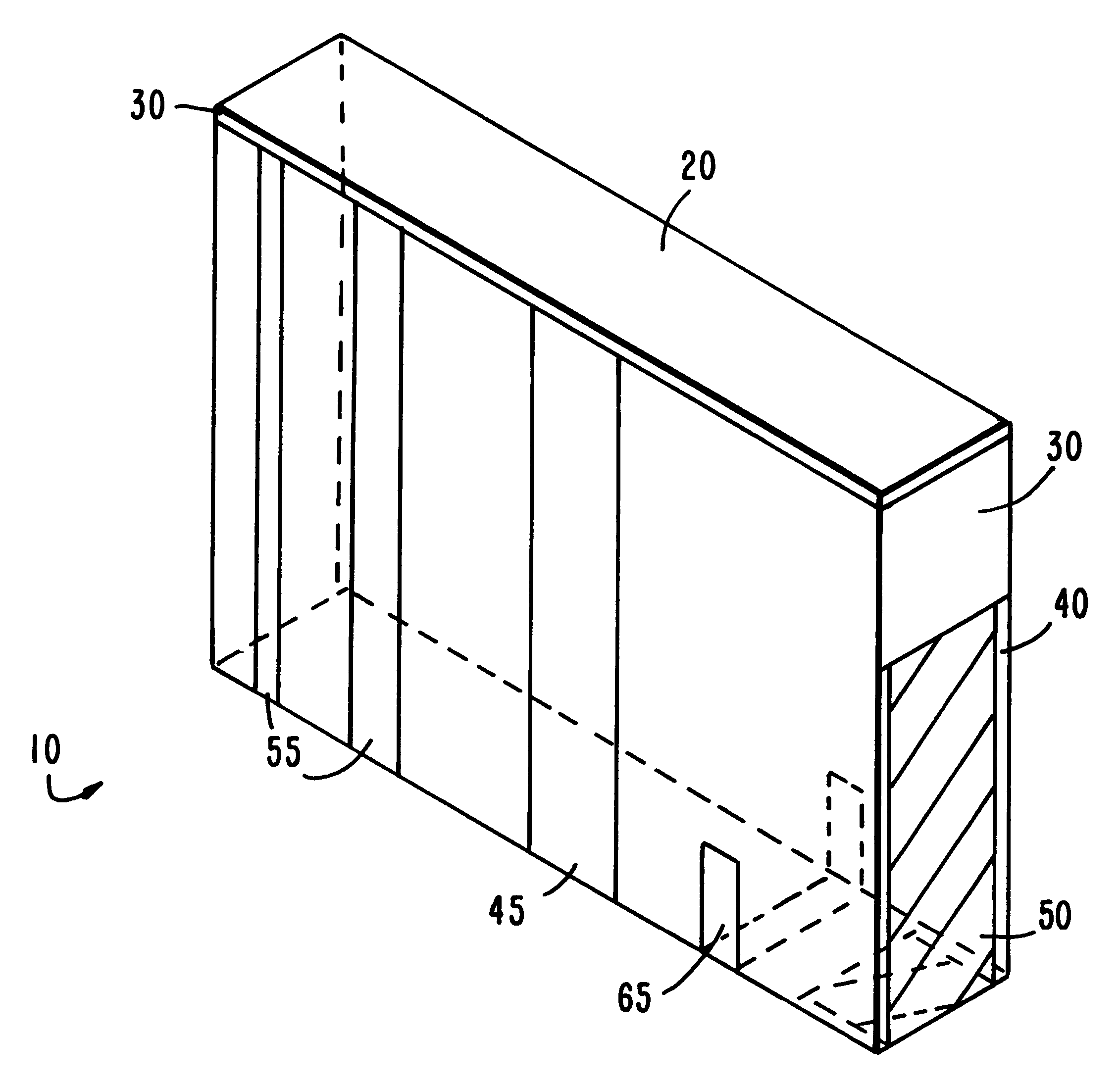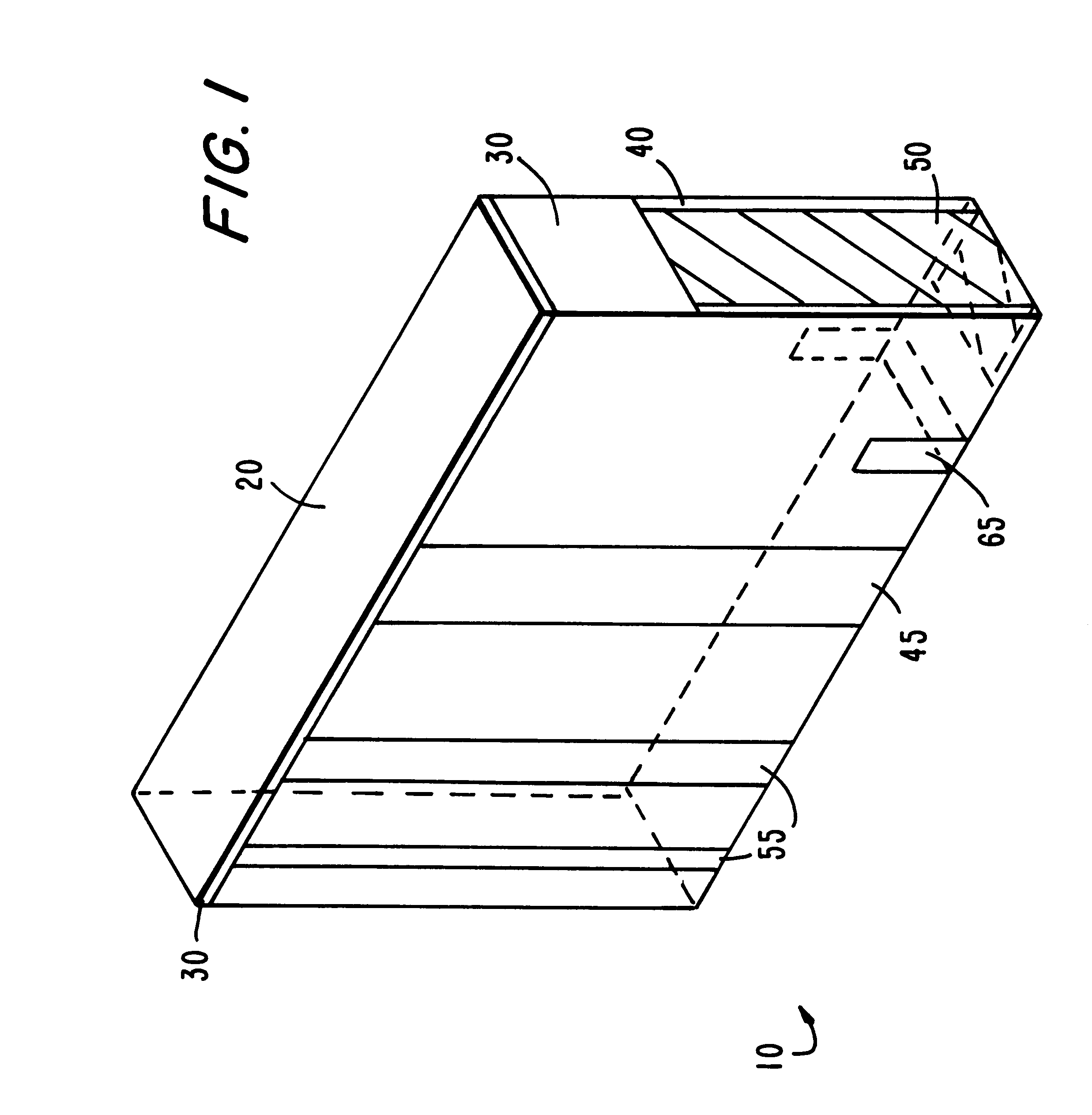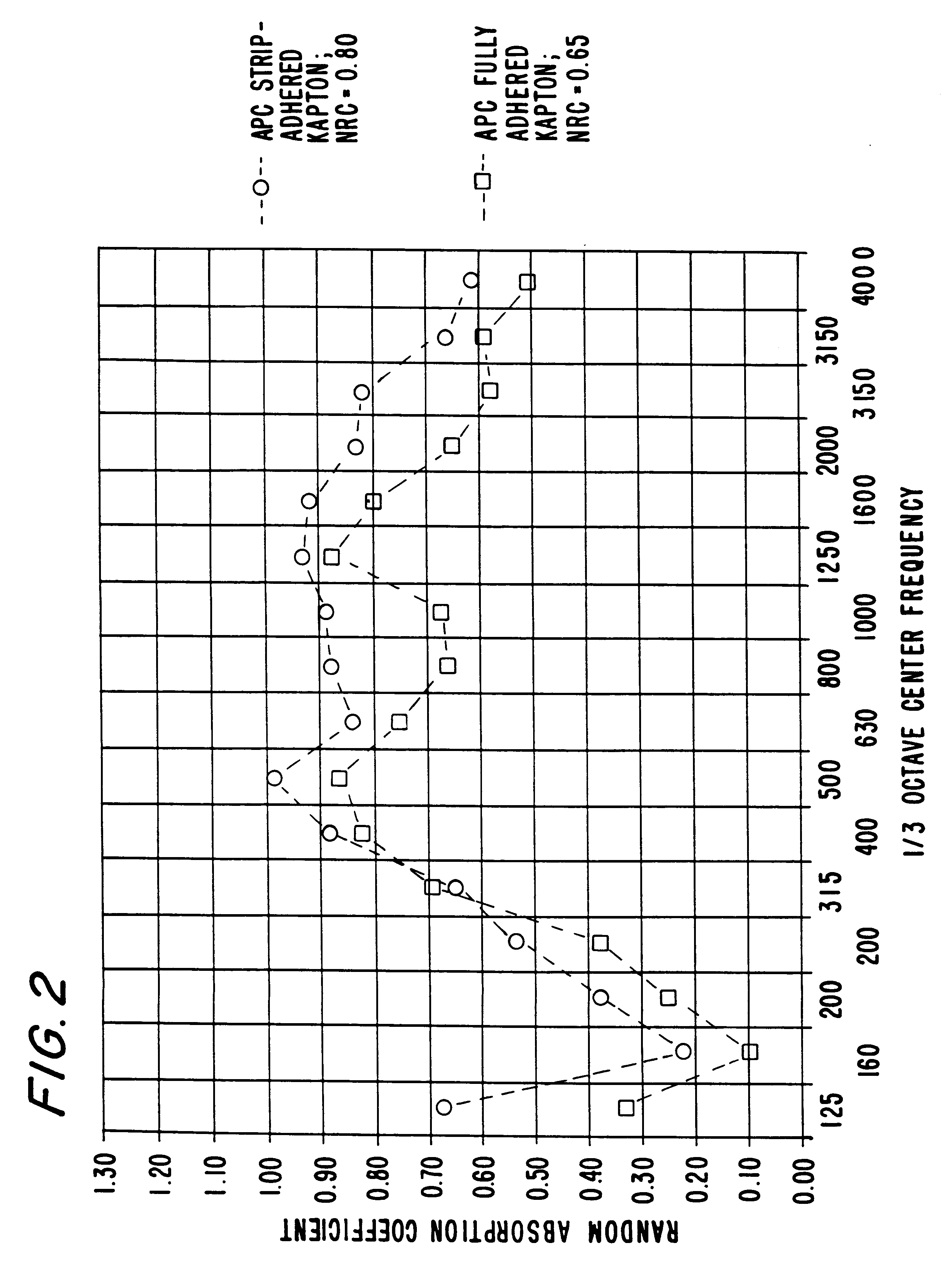Panel for absorbing acoustic energy
- Summary
- Abstract
- Description
- Claims
- Application Information
AI Technical Summary
Benefits of technology
Problems solved by technology
Method used
Image
Examples
Embodiment Construction
Referring now to the drawings, in FIG. 1 a lightweight acoustic absorbing panel is shown generally at 10. The absorbing panels of the present invention are particularly useful for absorbing acoustical energy created during a launch of a rocket. As used herein, the term "launch" denotes the period of time beginning with the ignition of the rocket carrying the fairing and payload, during liftoff and ascent of the rocket, through the time when the fairing and payload finally separate from the rocket. The acoustic absorbing panels 10 also protect the payload within the fairing before launch from contamination and electrostatic discharge (ESD) which may occur as various electrical systems of the payload and the rocket are used and tested, for example. In particular, the panels described herein advantageously line the inside surface of a fairing containing a vehicle, payload or satellite, as the terms are used interchangeably herein, which is susceptible to damage from acoustic vibration....
PUM
 Login to View More
Login to View More Abstract
Description
Claims
Application Information
 Login to View More
Login to View More - R&D
- Intellectual Property
- Life Sciences
- Materials
- Tech Scout
- Unparalleled Data Quality
- Higher Quality Content
- 60% Fewer Hallucinations
Browse by: Latest US Patents, China's latest patents, Technical Efficacy Thesaurus, Application Domain, Technology Topic, Popular Technical Reports.
© 2025 PatSnap. All rights reserved.Legal|Privacy policy|Modern Slavery Act Transparency Statement|Sitemap|About US| Contact US: help@patsnap.com



